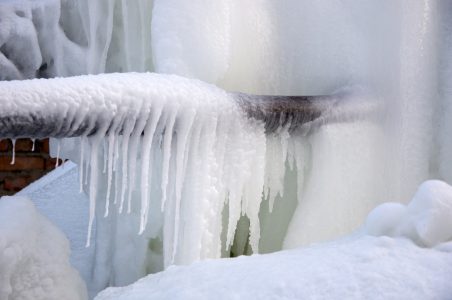Protecting Pipes from Cold Weather Damage: Key Approaches
Protecting Pipes from Cold Weather Damage: Key Approaches
Blog Article
The article author is making several good pointers related to How To Avoid Freezing Pipes in general in this content beneath.

Cold weather can ruin your plumbing, particularly by freezing pipelines. Here's exactly how to prevent it from taking place and what to do if it does.
Introduction
As temperatures drop, the risk of icy pipelines boosts, possibly resulting in pricey repair work and water damages. Understanding exactly how to stop frozen pipelines is essential for house owners in cool environments.
Recognizing Icy Pipes
What causes pipes to freeze?
Pipes freeze when subjected to temperatures below 32 ° F (0 ° C) for extended periods. As water inside the pipes ices up, it broadens, taxing the pipeline walls and possibly causing them to rupture.
Threats and damages
Icy pipes can lead to water system disturbances, building damage, and costly repairs. Burst pipes can flood homes and trigger substantial structural damages.
Indicators of Frozen Water Lines
Recognizing frozen pipelines early can stop them from bursting.
How to recognize icy pipelines
Try to find decreased water flow from faucets, unusual odors or noises from pipelines, and noticeable frost on revealed pipes.
Avoidance Tips
Shielding vulnerable pipelines
Wrap pipelines in insulation sleeves or use warmth tape to protect them from freezing temperature levels. Concentrate on pipelines in unheated or outside locations of the home.
Heating techniques
Keep indoor areas effectively heated, specifically locations with plumbing. Open up cabinet doors to permit cozy air to distribute around pipes under sinks.
Securing Outdoor Pipes
Garden pipes and exterior taps
Separate and drain yard pipes before winter season. Mount frost-proof spigots or cover outdoor taps with shielded caps.
What to Do If Your Pipelines Freeze
Immediate actions to take
If you believe frozen pipes, maintain faucets open to ease pressure as the ice melts. Make use of a hairdryer or towels taken in hot water to thaw pipes slowly.
Long-Term Solutions
Architectural changes
Take into consideration rerouting pipes away from outside wall surfaces or unheated areas. Add additional insulation to attic rooms, cellars, and crawl spaces.
Updating insulation
Invest in top quality insulation for pipes, attic rooms, and wall surfaces. Appropriate insulation assists keep consistent temperatures and minimizes the risk of frozen pipes.
Final thought
Protecting against icy pipelines calls for aggressive actions and fast feedbacks. By recognizing the reasons, indications, and preventive measures, property owners can safeguard their pipes throughout cold weather.
5 Ways to Prevent Frozen Pipes
Drain Outdoor Faucets and Disconnect Hoses
First, close the shut-off valve that controls the flow of water in the pipe to your outdoor faucet. Then, head outside to disconnect and drain your hose and open the outdoor faucet to allow the water to completely drain out of the line. Turn off the faucet when done. Finally, head back to the shut-off valve and drain the remaining water inside the pipe into a bucket or container. Additionally, if you have a home irrigation system, you should consider hiring an expert to clear the system of water each year.
Insulate Pipes
One of the best and most cost-effective methods for preventing frozen water pipes is to wrap your pipes with insulation. This is especially important for areas in your home that aren’t exposed to heat, such as an attic. We suggest using foam sleeves, which can typically be found at your local hardware store.
Keep Heat Running at 65
Your pipes are located inside your walls, and the temperature there is much colder than the rest of the house. To prevent your pipes from freezing, The Insurance Information Institute suggests that you keep your home heated to at least 65 degrees, even when traveling. You may want to invest in smart devices that can keep an eye on the temperature in your home while you’re away.
Leave Water Dripping
Moving water — even a small trickle — can prevent ice from forming inside your pipes. When freezing temps are imminent, start a drip of water from all faucets that serve exposed pipes. Leaving a few faucets running will also help relieve pressure inside the pipes and help prevent a rupture if the water inside freezes.
Open Cupboard Doors
Warm your kitchen and bathroom pipes by opening cupboards and vanities. You should also leave your interior doors ajar to help warm air circulate evenly throughout your home.
:strip_icc()/snow-outdoor-faucet-pipes-4af65d1e5e904fb1aa7bf74071fe5d89.jpg)
Do you really like more info about How to Prevent Your Pipes From Freezing? Write feedback directly below. We'd be delighted to listen to your responses about this blog. In hopes to see you back again in the near future. Don't hesitate to take the opportunity to promote this write-up if you liked it. I am grateful for your time. Kindly come by our blog back soon.
Book Your Installation Report this page